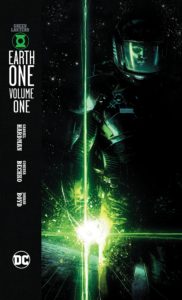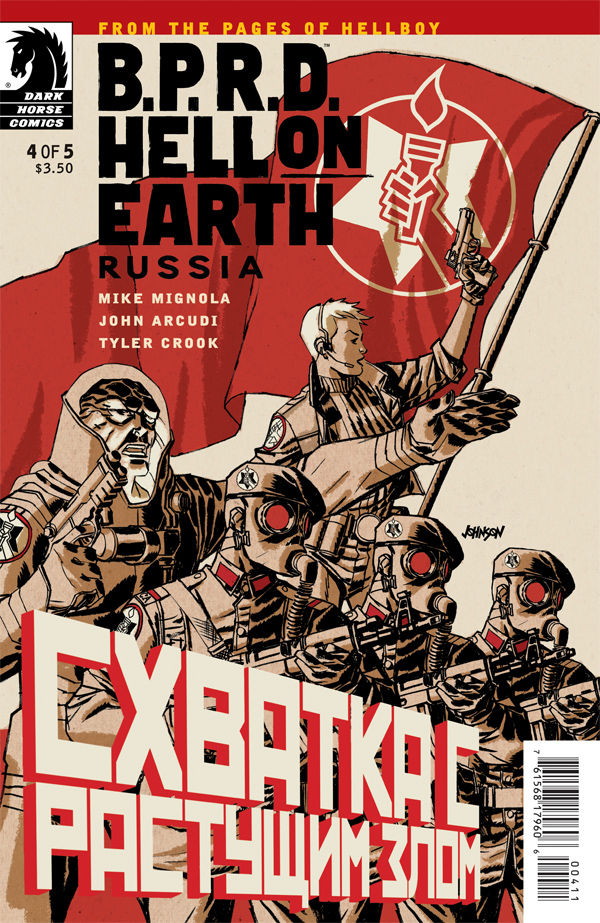 Green Lantern Earth One #1
Green Lantern Earth One #1
Publisher: DC
Story: Corinna Bechko, Gabriel Hardman
Pencils: Gabriel Hardman
Inks: Gabriel Hardman
Colors: Jonathan Boyd
Letters: Simon Bowland
The fifth title in DC’s “Earth One” series, which began back in 2010 with Superman Earth One, Green Lantern Earth One is perhaps the most successful entry in this line of non-continuity stories which seek to reimagine the origins of DC’s heroes. What makes Green Lantern Earth One so effective is that it changes Hal Jordan’s origins, and the Green Lantern mythos, just enough to draw on modern ideas and technology, while still holding true to enough of the 1959 roots of the character. Other entries in the Earth One series have not done as well in this regard, oftentimes changing things too much to be unrecognizable as the source material, or making tweaks so minor to make the changes unworthy of a separate non-continuity line.
While the changes made to Green Lantern on the surface level make sense – Hal Jordan begins the story not as a test pilot but as a full-fledged astronaut who is part of a crew searching out extraterrestrials metals as part of a business contract – what makes this book work so well is the character development, particularly of Hal Jordan and Kilowog. The traditional interactions with these two characters gets turned around in a fun and unexpected way, but one which flows naturally within the context of the story that Bechko and Hardman set out to create, so it does not come across as a cheap gimmick. All of the building blocks of Green Lantern lore, which of all DC properties has probably expanded the most over the past few decades, are present here, but are used in a different way, and a few are just barely hinted at. In all, the book has much more of a traditional science-fiction feel than it does a superhero story, and that’s a perfect way to approach this character.
The creative team walk a very fine line with trying to include the elements that make the Green Lantern books so much fun (the idea of “cops in space,” the Guardians, the Central Battery on Oa, Green Lanterns of different species throughout the galaxy, and the process of how each Lantern makes his or her ring work) without overwhelming newer readers with too much information. Part of what makes the Earth One series, as whole, great reads is that a reader can approach the material with no prior knowledge of the subject matter and not feel lost. However, long-time readers can of course find plenty of nods to DC history in these books, and then enjoy how that history is turned into something new and different.
Hal Jordan is a much more relatable character in this book than the hot-headed flyboy with no fear from the 1959 origin. Here, he is weighed down by some bad decisions in his past, and is trying to get away from them, which leads to the reason that he’s in space in the first place, working as a space miner in an asteroid belt. The entire process for how Hal becomes a Green Lantern, including exactly how he comes into possession of the ring, is different than the original proclamation from Abin Sur that Hal has “great willpower and knows no fear.” As much fun as the original, mainline continuity story of Hal getting the ring is, as it holds true to the somewhat goofy Silver Age stories that DC was publishing when Hal Jordan first debuted, the Earth One origin respects that tradition but modernizes it and makes it more approachable and believable for current readers.
Kilowog, too, is much more developed than just the gruff Sergeant of the Corps, shouting orders and trying to toughen everyone up. His character, along with Arisia, are almost completely reimagined from the ground up, but that makes the story all the better, as the reader cannot predict how the characters will act when confronted with various situations. However, the depictions of all of the characters still respect their main continuity origins, which is a testament to the strong writing.
Hardman’s art complements the story perfectly. His panel designs indicate a very thoughtful analysis of portraying the cramped, claustrophobic conditions of being inside various spacecraft, and then expand to illustrate the vast openness of outer space. His character designs are also well thought-out; Jordan here is no longer the clean-cut, handsome test pilot, but an older, grizzled blue-collar worker with tired eyes that have seen more than someone with his years should have seen. Those types of facial close-ups, whether human or alien, are some of the best parts of this book. With just a single panel focusing on a character’s close-up facial expression, the reader can learn so much more about what the character is thinking, a feat that could only otherwise be achieved with an over-abundance of narration boxes. Hardman’s inking, which moves between thin, delicate lines for certain characters and scenes, to darker, thicker, bolder lines for others, works well to highlight the pencil work. All of that artwork is then elevated with Jonathan Boyd’s colors, which portray the darkness of outer space, but with the occasional pop of green when necessary to highlight the use of the Green Lantern rings. It would be tempting to turn this book into just an overwhelming mixture of blacks and greens, but Boyd restrains himself and uses a full palette, which still appears dark, mysterious, and alien through his unique use of shading.
Green Lantern Earth One is one of the more enjoyable entries in the Earth One line, via its clever reimagining of Hal Jordan’s and the Green Lanterns’ origins, the strong character development, and dark, atmospheric art. The stage is set at the end of the book for a follow-up, but the story can definitely be enjoyed on its own with no knowledge of past or future Green Lantern lore.
Martin Thomas
martin@comicattack.net


